
The Enchanting Village of Kakopetria: A Hidden Gem in Cyprus
Discover Kakopetria Village: A Tranquil Hideaway in the Troodos Mountains, Rich in History, Culture, and Natural Beauty.
Nestled in the Troodos Mountains, Kakopetria Village is a charming retreat that offers a glimpse into the traditional Cypriot way of life. With its cobblestone streets, stone-built houses, and lush greenery, this village is a perfect destination for those looking to escape the hustle and bustle of city life. Visitors can wander through the old quarter, where time seems to have stood still, and explore the rich history and culture that this village proudly preserves. Kakopetria is also known for its beautiful natural surroundings. The village is surrounded by dense forests, flowing rivers, and scenic walking trails. It's an ideal spot for nature lovers and hikers. The nearby Solea Valley offers breathtaking views and numerous paths for outdoor enthusiasts. Don't miss the chance to visit the Millomeris Waterfall, one of the most picturesque spots in the area. Food lovers will find plenty to enjoy in Kakopetria as well. The village is home to a variety of traditional tavernas and restaurants serving delicious Cypriot cuisine. From hearty stews to fresh mountain trout, there is something to satisfy every palate. Be sure to try local delicacies like halloumi cheese and loukoumades, a type of sweet pastry. In addition to its natural beauty and culinary delights, Kakopetria offers a range of cultural attractions. The Church of Agios Nikolaos tis Stegis, a UNESCO World Heritage site, is a must-visit for its stunning frescoes and historical significance. The village also hosts several festivals throughout the year, celebrating everything from local produce to religious events, giving visitors a chance to experience the vibrant community spirit of Kakopetria.
Local tips in Kakopetria Village
- Visit during spring or autumn when the weather is perfect for exploring the outdoors.
- Wear comfortable shoes as the cobblestone streets can be uneven.
- Try the local honey and wine, which are specialties of the region.
- Check the local festival calendar to experience traditional celebrations.
- Stay in a traditional guesthouse for an authentic experience.
The Enchanting Village of Kakopetria: A Hidden Gem in Cyprus
Nestled in the Troodos Mountains, Kakopetria Village is a charming retreat that offers a glimpse into the traditional Cypriot way of life. With its cobblestone streets, stone-built houses, and lush greenery, this village is a perfect destination for those looking to escape the hustle and bustle of city life. Visitors can wander through the old quarter, where time seems to have stood still, and explore the rich history and culture that this village proudly preserves. Kakopetria is also known for its beautiful natural surroundings. The village is surrounded by dense forests, flowing rivers, and scenic walking trails. It's an ideal spot for nature lovers and hikers. The nearby Solea Valley offers breathtaking views and numerous paths for outdoor enthusiasts. Don't miss the chance to visit the Millomeris Waterfall, one of the most picturesque spots in the area. Food lovers will find plenty to enjoy in Kakopetria as well. The village is home to a variety of traditional tavernas and restaurants serving delicious Cypriot cuisine. From hearty stews to fresh mountain trout, there is something to satisfy every palate. Be sure to try local delicacies like halloumi cheese and loukoumades, a type of sweet pastry. In addition to its natural beauty and culinary delights, Kakopetria offers a range of cultural attractions. The Church of Agios Nikolaos tis Stegis, a UNESCO World Heritage site, is a must-visit for its stunning frescoes and historical significance. The village also hosts several festivals throughout the year, celebrating everything from local produce to religious events, giving visitors a chance to experience the vibrant community spirit of Kakopetria.
When is the best time to go to Kakopetria Village?
Iconic landmarks you can’t miss
Waterfalls Kakopetria
Experience the breathtaking beauty of the Waterfalls in Kakopetria, a hidden gem in the heart of Cyprus, perfect for nature lovers and adventurers alike.
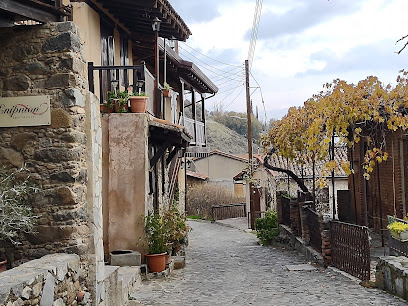
The Old Kakopetria
Experience the charm of The Old Kakopetria, a picturesque Cypriot village that combines stunning natural beauty with rich cultural heritage.
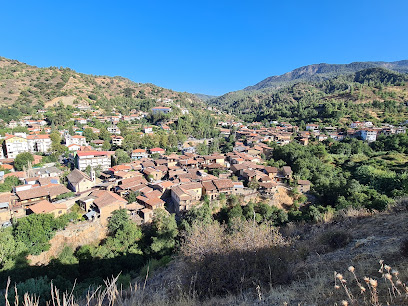
The Old Kakopetria (south entrance)
Explore The Old Kakopetria, a hidden gem in the Troodos Mountains of Cyprus, where nature meets history in a picturesque village setting.
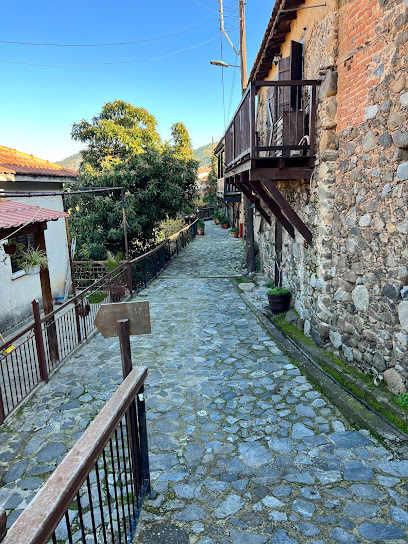
Karkotis river
Experience the serene beauty of Karkotis River in Kakopetria, a paradise for nature lovers and adventure seekers in Cyprus.
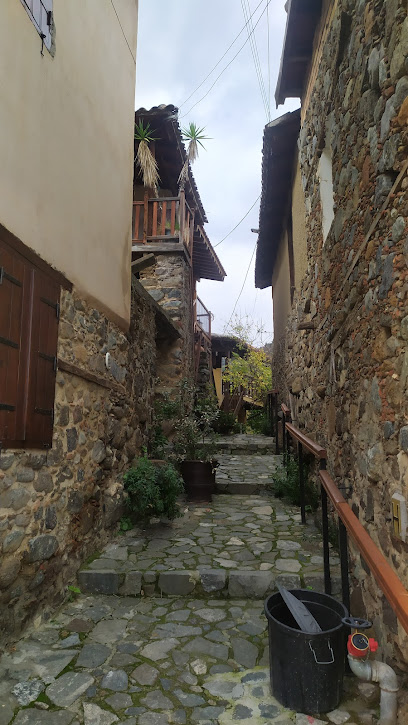
The Couple's Stone
Discover the romance of The Couple's Stone in Kakopetria, a picturesque location perfect for couples seeking love and adventure amidst stunning nature.
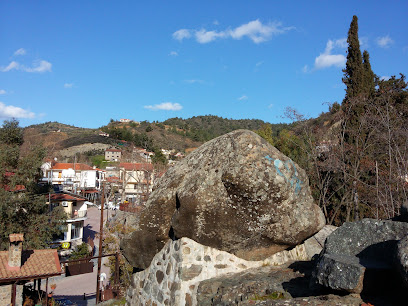
Πάρκο
Discover the serene beauty of Πάρκο in Kakopetria, a perfect retreat for nature lovers and travelers seeking tranquility in Cyprus.
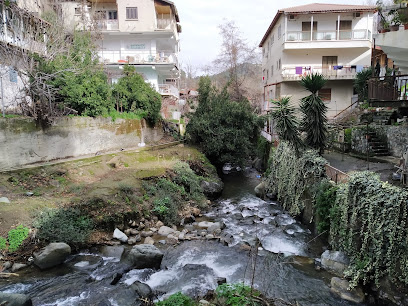
Unmissable attractions to see
Υδροπάρκο Φασουρίου Watermania
Discover the excitement of Fasouri Watermania, Cyprus's premier water park, offering thrilling slides and family fun in a sun-soaked paradise.
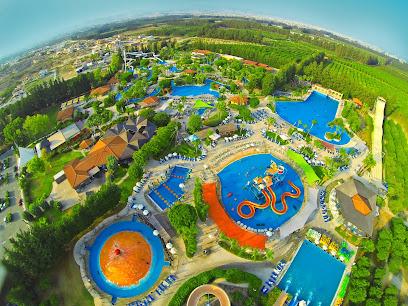
Troodos Botanical Garden
Explore the diverse flora and serene landscapes of Troodos Botanical Garden, a tranquil retreat in the heart of Cyprus.
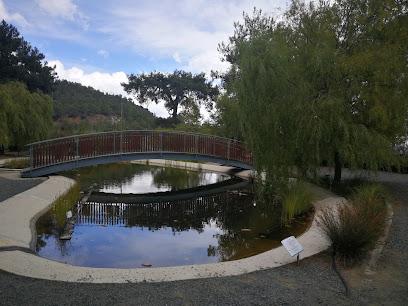
Kyrenia Mountains
Discover the breathtaking beauty and rich history of the Kyrenia Mountains, a premier destination for outdoor enthusiasts in Cyprus.
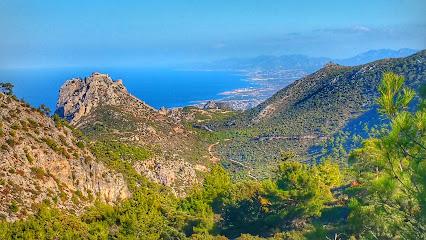
Platania
Explore the natural beauty of Platania National Reserve, a tranquil oasis in Cyprus, perfect for hiking and nature photography.
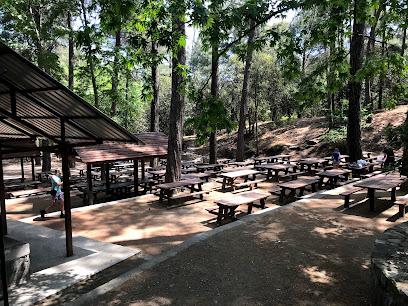
Platres Chocolate Workshop
Discover the art of chocolate-making at Platres Chocolate Workshop, a sweet escape in Pano Platres, Cyprus.
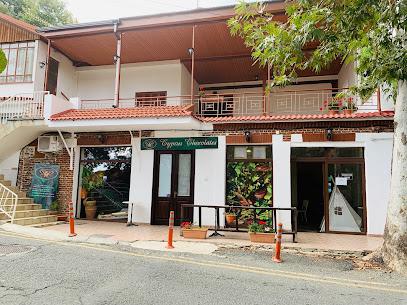
Bee & Embroidery Museum
Explore the Bee & Embroidery Museum in Kato Drys, Cyprus, where tradition meets artistry in a captivating cultural experience.
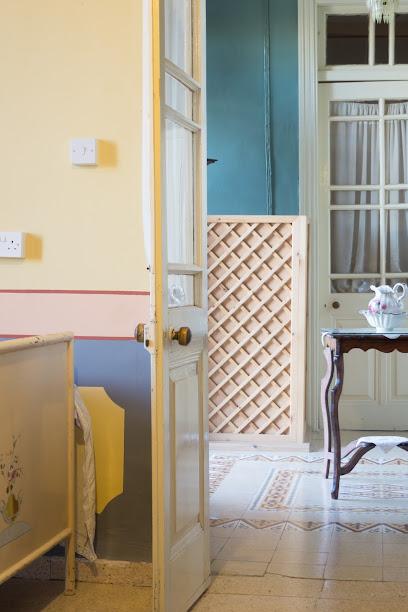
Zambartas Wineries
Experience the rich flavors and history of Cypriot wines at Zambartas Wineries in Agios Amvrosios, a must-visit for every wine lover.
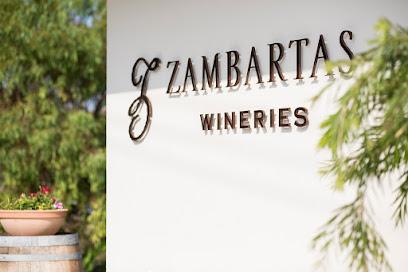
Monastery of the Virgin Mary of Arakas
Experience the serenity and rich history of the Monastery of the Virgin Mary of Arakas in Lagoudera, a captivating destination in Cyprus.
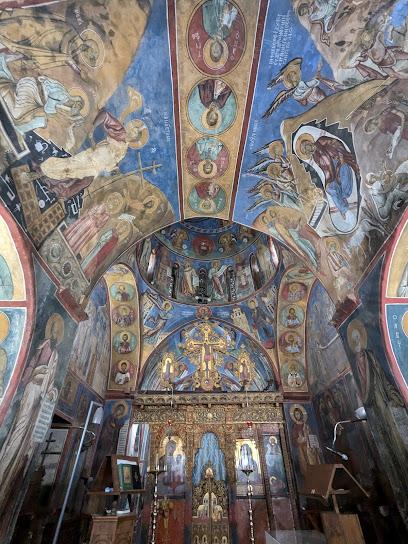
Mesa Potamos (Argolachania) Picnic Site
Discover the enchanting Mesa Potamos Picnic Site in Moniatis, Cyprus, where nature and barbecue converge for an unforgettable outdoor experience.

Panagia Amirous Monastery
Explore the serene Panagia Amirous Monastery in Mathikoloni, Cyprus, a haven of tranquility and rich cultural heritage amidst stunning landscapes.
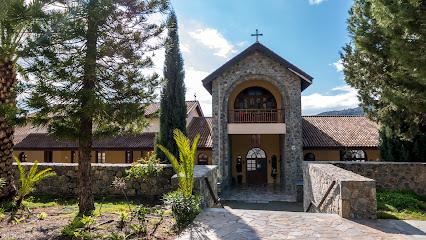
Local Archaeological Museum of Kourion
Discover the rich heritage of Cyprus at the Local Archaeological Museum of Kourion, where ancient artifacts tell the story of a fascinating past.
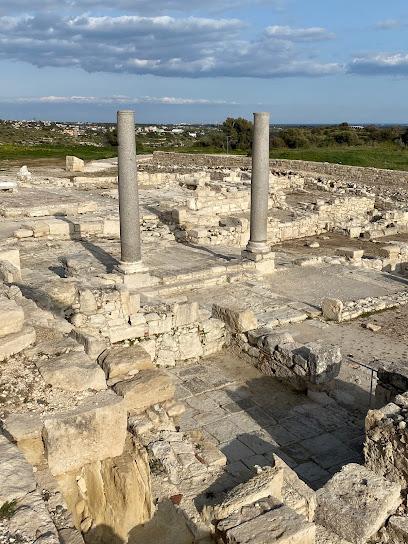
Nelion Winery
Discover the enchanting Nelion Winery in Praitori, Cyprus, where exquisite wines meet stunning vineyard views in a perfect blend of tradition and beauty.
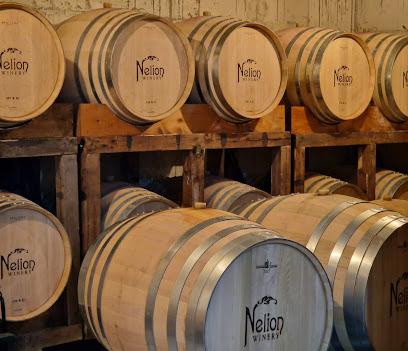
Κακοπετρια Μονοπάτι (Vateri Nature Trail)
Explore the breathtaking beauty of Vateri Nature Trail in Kakopetria, Cyprus - a must-visit for nature lovers and hiking enthusiasts.
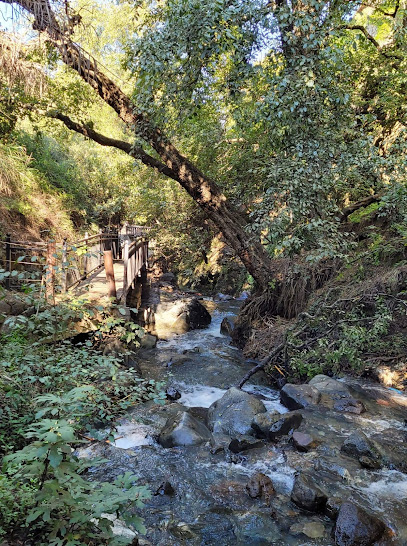
The Old Kakopetria (south entrance)
Explore the historic charm and breathtaking landscapes of Old Kakopetria in the Troodos Mountains, a true gem of Cyprus for every traveler.
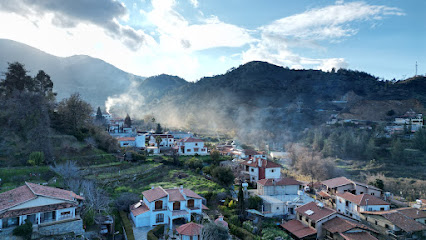
Μούττη του Καλογηρου
Discover the cultural heritage and beauty of Μούττη του Καλογηρού, a captivating tourist attraction in Nicosia, Cyprus, where history and nature meet.
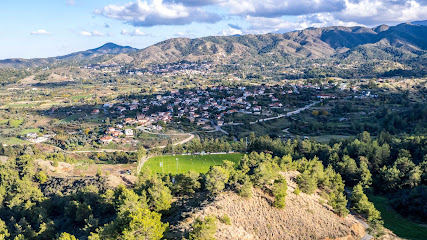
Essential places to dine
THE MILL HOTEL
Discover tranquility and tradition at The Mill Hotel in Kakopetria, where comfort meets Cypriot culture amidst breathtaking landscapes.
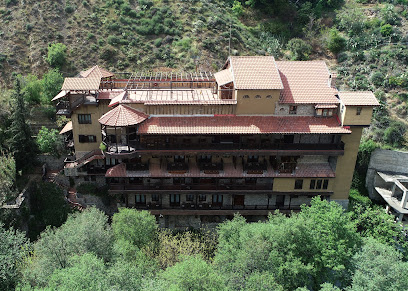
Podji Poda
Experience authentic Cypriot cuisine at Podji Poda in Kakopetria - where tradition meets flavor in a picturesque setting.

Chrysanthis
Experience authentic Cypriot cuisine at Chrysanthis, where every dish tells a story in a warm and welcoming setting.
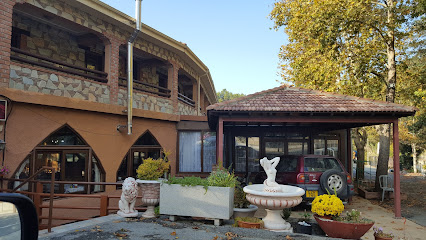
Ais Giwrkis Kakopetria
Experience authentic Cypriot cuisine at Ais Giwrkis Kakopetria - where tradition meets flavor amidst breathtaking mountain views.
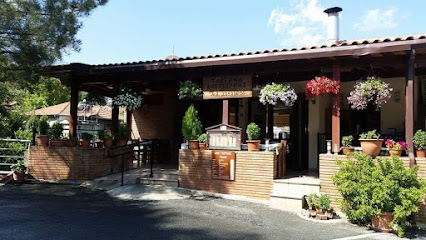
Zoumos Restaurant
Experience authentic Cypriot cuisine in a charming setting at Zoumos Restaurant in beautiful Kakopetria.
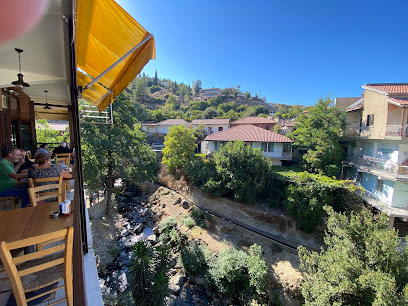
Linos Inn
Discover comfort and charm at Linos Inn in Kakopetria - your perfect base for exploring Cyprus's breathtaking Troodos Mountains.

The Village Pub & Restaurant
Experience authentic Cypriot cuisine amidst stunning mountain views at The Village Pub & Restaurant in picturesque Kakopetria.

Platia Kakopetrias
Discover authentic Cypriot flavors at Platia Kakopetrias - a must-visit restaurant in picturesque Kakopetria.
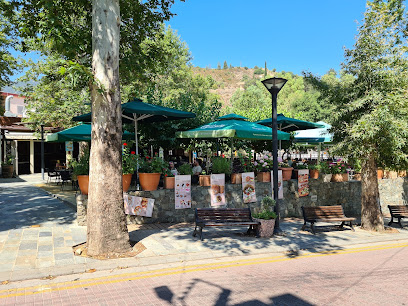
Colours Crêperie
Experience the best crêpes in Kakopetria at Colours Crêperie – where every bite tells a story amidst beautiful Cypriot scenery.
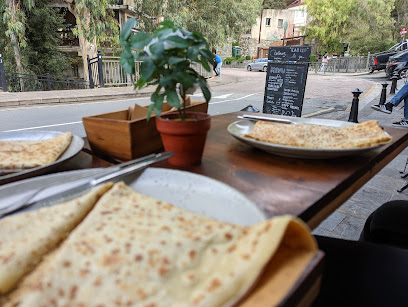
PLATINUM cafe - restaurant / suites
Experience culinary bliss at PLATINUM Cafe - Restaurant & Suites in Kakopetria; where every meal is a celebration amidst stunning natural beauty.
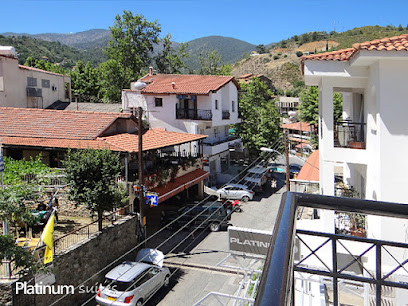
River Park Restaurant
Experience the flavors of Cyprus at River Park Restaurant, where culinary excellence meets breathtaking views in Kakopetria.
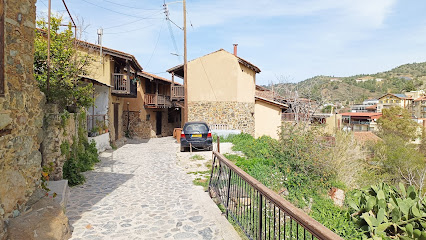
Droseri Potamia
Savor authentic Cypriot flavors in a scenic setting at Droseri Potamia - where every meal tells a story.
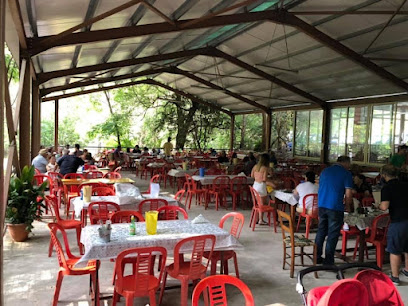
Stou Violari
Experience authentic Cypriot cuisine amidst stunning mountain views at Stou Violari in Kakopetria.
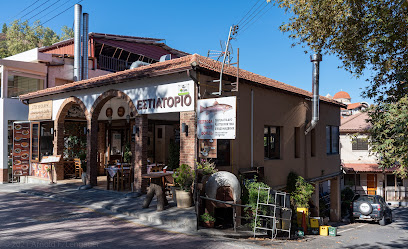
Vengera Cafe-Restaurant & Luxury Suites
Discover culinary excellence and luxury accommodations at Vengera Cafe-Restaurant & Luxury Suites in scenic Kakopetria, Cyprus.
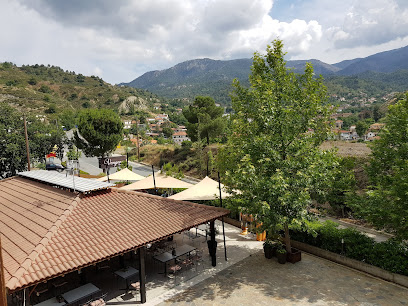
Taverna stou Zoppi
Discover authentic Greek cuisine at Taverna stou Zoppi in Kakopetria - where tradition meets taste amidst stunning mountain scenery.
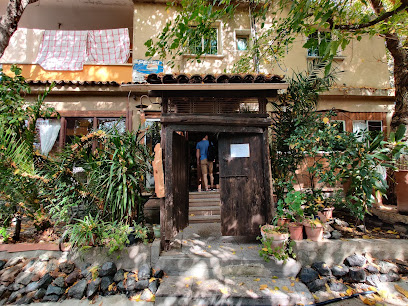
Markets, malls and hidden boutiques
Waterfalls Kakopetria
Experience the breathtaking beauty of the Waterfalls of Kakopetria, a serene natural attraction in Cyprus perfect for relaxation and adventure.
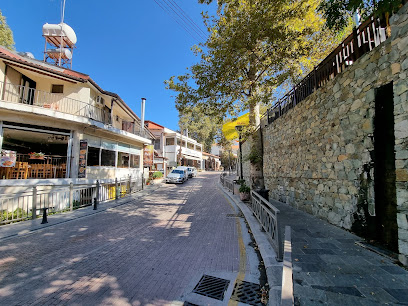
PLATINUM cafe - restaurant / suites
Experience the best of Kakopetria at PLATINUM Cafe - a delightful coffee shop and restaurant offering local flavors and cozy suites.
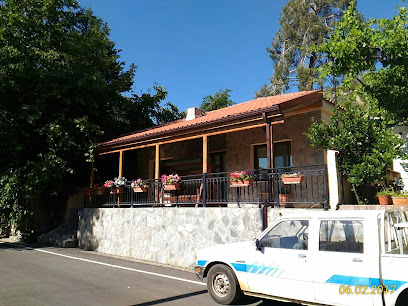
Colours Crêperie
Discover the vibrant flavours of Cyprus at Colours Crêperie, where delicious crêpes and a charming atmosphere await every visitor.
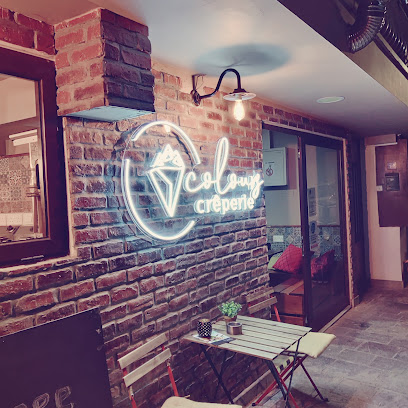
Παραδοσιακός Φούρνος της Γαλάτας
Delight in traditional Cypriot pastries and breads at Παραδοσιακός Φούρνος της Γαλάτας, a charming bakery in Kakopetria, Cyprus.
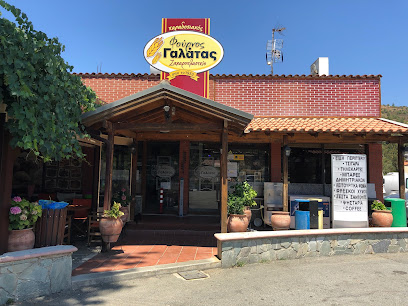
The Old Kakopetria
Explore the enchanting Old Kakopetria, a historic village in Cyprus, with its charming streets, rich culture, and breathtaking mountain views.
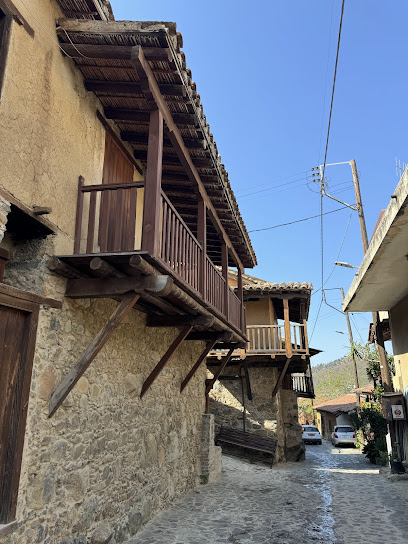
Pharmacy Nasia Koronidou
Discover Pharmacy Nasia Koronidou in Kakopetria - Your essential stop for health and wellness needs while exploring Cyprus.
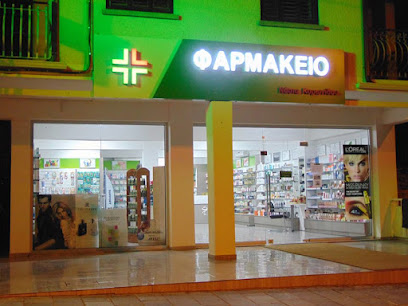
The Old Kakopetria (south entrance)
Explore the enchanting village of Old Kakopetria, where history, culture, and stunning landscapes converge in the heart of Cyprus.

ΥΠΕΡΑΓΟΡΑ ΕΙΡΗΝΗ ΧΑΡΑΛΑΜΠΟΥΣ
Immerse yourself in the local culture and flavors at ΥΠΕΡΑΓΟΡΑ ΕΙΡΗΝΗ ΧΑΡΑΛΑΜΠΟΥΣ, the heart of Kakopetria's culinary scene.
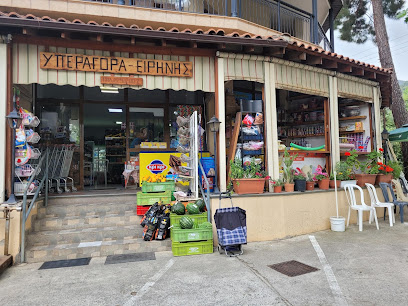
NIKI KYPRIDIMOU PHARMACY LTD
Discover local health solutions at Niki Kypridimou Pharmacy in Kakopetria, where community care meets traveler needs in a charming village setting.
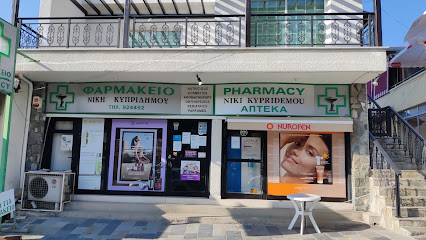
Ζάχαρη κι αλάτι
Explore the sweet side of Cyprus at Ζάχαρη κι αλάτι, a charming confectionery store in Kakopetria offering traditional treats and delightful desserts.

Gifts on the Hill
Discover unique handcrafted jewelry at Gifts on the Hill, a charming gem in Kakopetria, Cyprus, offering a blend of artistry and local culture.
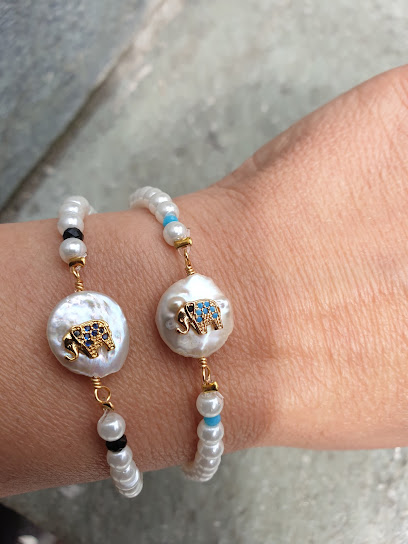
Bridge Kiosk Periptero
Discover the charm of Kakopetria at Bridge Kiosk Periptero, where local flavors and breathtaking views come together for an unforgettable experience.
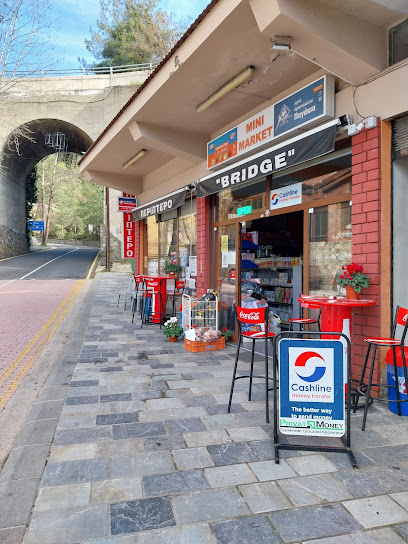
Το Μπακάλικο της Γαλάτας
Explore authentic Cypriot flavors at Το Μπακάλικο της Γαλάτας, a charming supermarket in the heart of Galata, perfect for local delicacies and fresh produce.
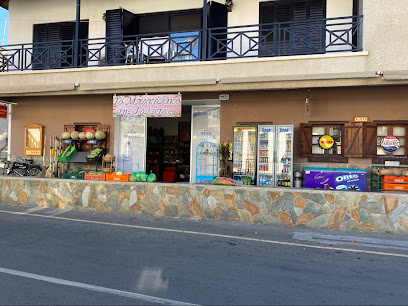
Κατάστημα υποδημάτων MarPo Shoes (Πόπη shoes)
Explore stylish and comfortable footwear at MarPo Shoes in Kakopetria, where quality meets local charm.

The Boho Project
Explore The Boho Project in Kakopetria for unique Cypriot gifts and handmade crafts that capture the spirit of the island.

Essential bars & hidden hideouts
Podji Poda
Experience authentic Cypriot flavors at Podji Poda, a delightful restaurant in Kakopetria with stunning views and a warm atmosphere.
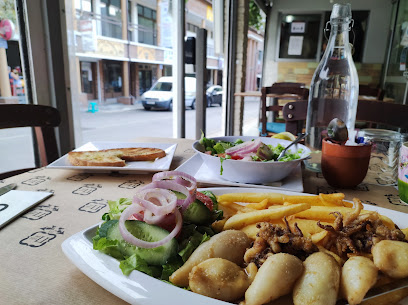
Ais Giwrkis Kakopetria
Experience authentic Cypriot cuisine in the scenic Kakopetria, where local flavors meet warm hospitality in a charming setting.
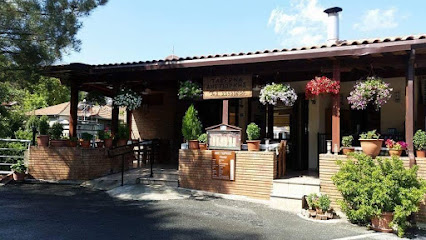
Zoumos Restaurant
Discover the authentic flavors of Cyprus at Zoumos Restaurant in Kakopetria, a must-visit for culinary enthusiasts.
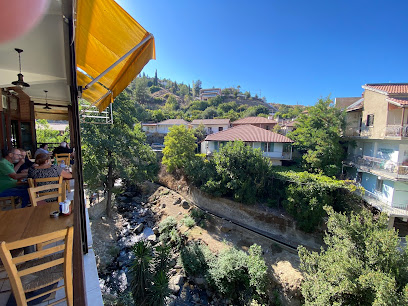
The Village Pub & Restaurant
Experience authentic Cypriot cuisine in a stunning mountain setting at The Village Pub & Restaurant in Kakopetria.
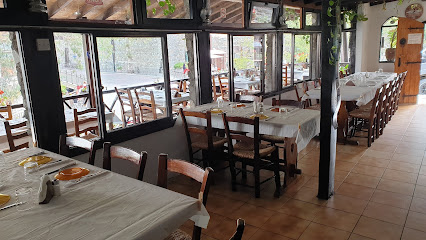
1725 Cafe - Bar
Discover the enchanting 1725 Cafe - Bar in Troodos, Cyprus, where local flavors meet stunning mountain views and a cozy atmosphere.
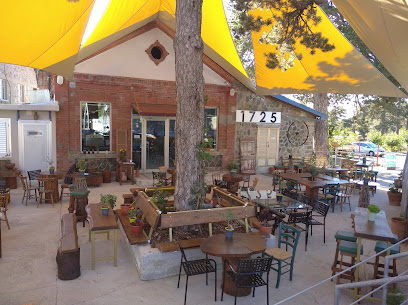
Platia Kakopetrias
Experience the flavors of Cyprus at Platia Kakopetrias, a charming restaurant in the heart of Kakopetria, known for its authentic dishes and stunning views.
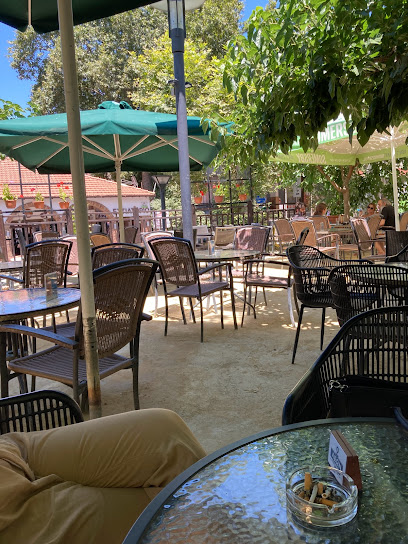
PLATINUM cafe - restaurant / suites
Discover the culinary charm of PLATINUM Cafe in Kakopetria, where local flavors meet stunning mountain views for an unforgettable dining experience.
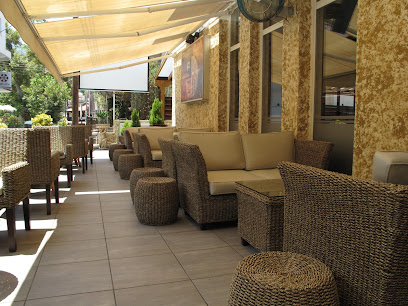
KafeOinos
Discover the charm of KafeOinos, your ideal café and wine bar in Kalopanayiotis, Cyprus, where local flavors and stunning views await.
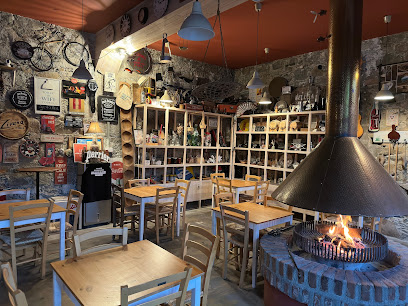
Colours Crêperie
Experience the best of crêpes in Kakopetria, Cyprus, at Colours Crêperie, where every bite tells a delicious story.
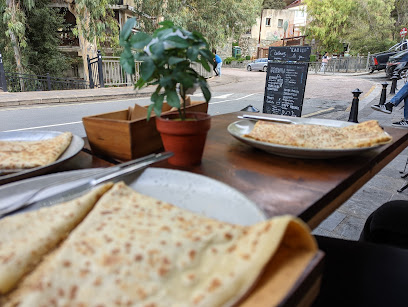
River Park Restaurant
Discover the serene River Park Restaurant in Kakopetria, Cyprus, offering exquisite local dishes amidst stunning riverside views.
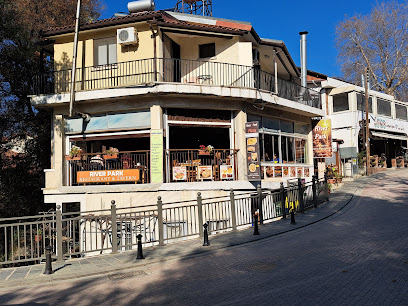
Vengera Cafe-Restaurant & Luxury Suites
Experience Cypriot hospitality at Vengera Cafe-Restaurant & Luxury Suites, where culinary excellence meets luxurious comfort in the heart of Galata.
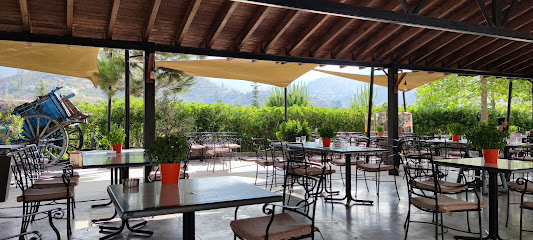
Stou Violari
Savor the true flavors of Cyprus at Stou Violari, a charming restaurant in Kakopetria offering authentic Cypriot dishes and stunning mountain views.
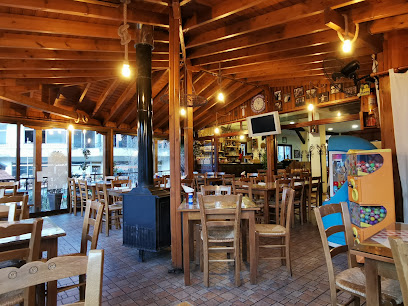
Taverna stou Zoppi
Discover authentic Greek flavors in the heart of Kakopetria at Taverna stou Zoppi, where tradition meets hospitality.
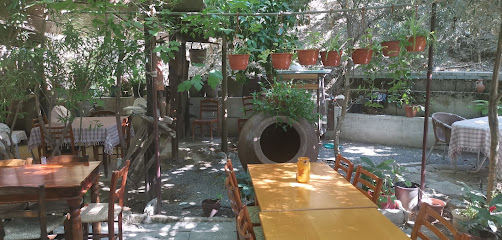
Corner Mill Cafe and Bar
Discover the tranquil Corner Mill Cafe and Bar in Kakopetria, Cyprus – your peaceful haven for delicious meals and refreshing drinks in nature.
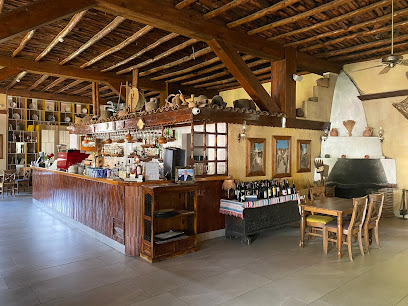
Bridge Club
Discover the charm of Kakopetria at the Bridge Club, where cozy vibes and delightful drinks await you amidst stunning natural beauty.
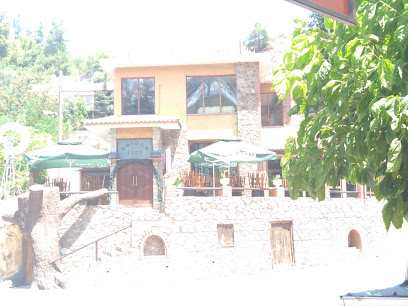
Local Phrases about Kakopetria Village
-
- HelloΓεια σας
[Yia sas] - GoodbyeΑντίο
[Antio] - YesΝαι
[Ne] - NoΌχι
[Ochi] - Please/You're welcomeΠαρακαλώ
[Parakalo] - Thank youΕυχαριστώ
[Efharisto] - Excuse me/SorryΣυγγνώμη
[Signomi] - How are you?Πώς είστε;
[Pos iste?] - Fine. And you?Καλά. Εσείς;
[Kala. Esis?] - Do you speak English?Μιλάτε Αγγλικά;
[Milate Agglika?] - I don't understandΔεν καταλαβαίνω
[Den katalavaino]
- HelloΓεια σας
-
- I'd like to see the menu, pleaseΘα ήθελα να δω το μενού, παρακαλώ
[Tha ithela na do to menu, parakalo] - I don't eat meatΔεν τρώω κρέας
[Den troo kreas] - Cheers!ΥΓΕΙΑ!
[Yia!] - I would like to pay, pleaseΘα ήθελα να πληρώσω, παρακαλώ
[Tha ithela na plirosso, parakalo]
- I'd like to see the menu, pleaseΘα ήθελα να δω το μενού, παρακαλώ
-
- Help!Βοήθεια!
[Voithia!] - Go away!Φύγε!
[Fiye!] - Call the Police!Καλέστε την Αστυνομία!
[Kaleste tin Astinomia!] - Call a doctor!Καλέστε έναν γιατρό!
[Kaleste enan yatro!] - I'm lostΈχω χαθεί
[Eho hathi] - I'm illΕίμαι άρρωστος
[Ime arrostos]
- Help!Βοήθεια!
-
- I'd like to buy...Θα ήθελα να αγοράσω...
[Tha ithela na agoraso...] - I'm just lookingΑπλά κοιτάω
[Apla kitao] - How much is it?Πόσο κοστίζει;
[Poso kostizi?] - That's too expensiveΑυτό είναι πολύ ακριβό
[Afto ine poli akribo] - Can you lower the price?Μπορείτε να μειώσετε την τιμή;
[Borite na miosete tin timi?]
- I'd like to buy...Θα ήθελα να αγοράσω...
-
- What time is it?Τι ώρα είναι;
[Ti ora ine?] - It's one o'clockΕίναι μία ώρα
[Ine mia ora] - Half past (10)Μισή (10)
[Misi (10)] - MorningΠρωί
[Proi] - AfternoonΑπόγευμα
[Apoyevma] - EveningΒράδυ
[Vradi] - YesterdayΧθες
[Hthes] - TodayΣήμερα
[Simera] - TomorrowΑύριο
[Aurio] - 1Ένα
[Ena] - 2Δύο
[Dio] - 3Τρία
[Tria] - 4Τέσσερα
[Tessera] - 5Πέντε
[Pente] - 6Έξι
[Exi] - 7Επτά
[Epta] - 8Οκτώ
[Okto] - 9Εννέα
[Ennea] - 10Δέκα
[Deka]
- What time is it?Τι ώρα είναι;
-
- Where's a/the...?Πού είναι ένα/το...;
[Pou ine ena/to...?] - What's the address?Ποια είναι η διεύθυνση;
[Pia ine i diefthinsi?] - Can you show me (on the map)?Μπορείτε να μου δείξετε (στο χάρτη);
[Borite na mou dixete (sto charti)?] - When's the next (bus)?Πότε είναι το επόμενο (λεωφορείο);
[Pote ine to epomeno (leoforeio)?] - A ticket (to ....)Ένα εισιτήριο (για ....)
[Ena isitirio (ya ....)]
- Where's a/the...?Πού είναι ένα/το...;
History of Kakopetria Village
-
Kakopetria Village, nestled in the Troodos Mountains of Cyprus, traces its origins back to the Byzantine era. The village was established during a period of significant population movement and settlement in the mountainous regions of Cyprus, providing refuge and agricultural opportunities away from the coastal areas prone to pirate attacks.
-
During the medieval period, Kakopetria came under the rule of the Frankish Lusignan dynasty. The influence of Frankish culture is evident in the architectural style of some of the village's older buildings. The Lusignans fortified the village and the surrounding region to protect against invasions and to ensure control over the lucrative agricultural lands.
-
The Ottoman Empire's conquest of Cyprus in 1571 brought significant changes to Kakopetria. The village, like many others on the island, experienced shifts in administrative structures and land ownership. The Ottomans introduced new agricultural practices and taxation systems, which influenced the village's economy and social fabric. Despite these changes, Kakopetria maintained a degree of autonomy and continued to thrive as a rural community.
-
Kakopetria is renowned for its well-preserved medieval and Byzantine architecture. One of the most notable landmarks is the Church of Agios Nikolaos tis Stegis, a UNESCO World Heritage site. This church, dating back to the 11th century, features stunning frescoes and a unique timber-roof design. The village's narrow, cobbled streets and traditional houses with wooden balconies reflect its rich architectural heritage.
-
Under British rule from 1878 to 1960, Kakopetria experienced modernization and infrastructural development. Roads were improved, and new public buildings and schools were constructed. The British influence is also seen in the village's administrative practices and educational system. Post-independence, Kakopetria has continued to evolve, balancing modernization with the preservation of its historical and cultural identity.
-
Kakopetria is known for its vibrant cultural festivals, which celebrate the village's heritage and traditions. The annual 'Anthestiria' flower festival, held in spring, showcases the region's floral beauty and includes traditional music, dance, and food. The village also celebrates religious festivals with processions, church services, and communal feasts, reflecting the deep-rooted Orthodox Christian faith of its inhabitants.
-
Agriculture has been the backbone of Kakopetria's economy for centuries. The village is famous for its orchards, particularly apple and cherry trees, as well as vineyards producing local wine. Traditional farming methods are still practiced, and visitors can sample local delicacies such as 'pasteli' (a sesame seed and honey confection) and 'koupepia' (stuffed vine leaves), which showcase the rich culinary heritage of the region.
Kakopetria Village Essentials
-
Kakopetria Village is located in the Troodos Mountains of Cyprus. The nearest international airport is Larnaca International Airport, approximately 110 kilometers away. From Larnaca, you can rent a car and drive to Kakopetria, which takes around 1.5 to 2 hours. Alternatively, you can take a bus to Nicosia and then transfer to a regional bus that goes to Kakopetria. Taxis are also available but can be more expensive.
-
Kakopetria Village is relatively small, making it easy to explore on foot. For trips to nearby attractions, renting a car is the most convenient option, offering flexibility and ease of travel. Local buses connect Kakopetria with other villages and cities, but they may not run frequently. Taxis are available and can be booked through your hotel or local taxi companies.
-
The official currency in Cyprus is the Euro (EUR). Credit cards are widely accepted in hotels, restaurants, and shops in Kakopetria. However, it's advisable to carry some cash, especially for smaller establishments or local markets. ATMs are available in the village for cash withdrawals. Always inform your bank of your travel plans to avoid any issues with card usage.
-
Kakopetria Village is generally considered a safe destination for tourists. Crime rates are low, but it is always wise to take standard precautions such as not leaving your belongings unattended and avoiding poorly lit areas at night. There are no specific high-crime areas targeting tourists, but staying vigilant and aware of your surroundings is always recommended.
-
In case of emergency, dial 112 for immediate assistance. The local police station and medical facilities are available in Kakopetria. It is highly recommended to have travel insurance that covers medical emergencies. For minor health issues, there are pharmacies in the village where you can purchase over-the-counter medications.
-
Fashion: Do dress modestly, especially when visiting religious sites. Avoid overly revealing clothing. Religion: Do respect local customs and traditions. Always cover your head when entering churches and monasteries. Public Transport: Do be respectful and give up your seat to elderly passengers. Don’t eat or drink on public transport. Greetings: Do greet people with a handshake. A slight bow of the head is also a sign of respect. Eating & Drinking: Do try local delicacies and accept food offerings graciously. Don’t refuse hospitality, as it is considered impolite.
-
To experience Kakopetria Village like a local, visit the local markets where you can buy fresh produce and traditional Cypriot goods. Engage with locals, who are often friendly and willing to share stories about the village's history and culture. Don't miss visiting the old part of the village, which offers charming narrow streets and traditional architecture. For a unique experience, take a walk along the Karkotis River and enjoy the scenic beauty of the area.
Nearby Cities to Kakopetria Village
-
Things To Do in Limassol
-
Things To Do in Pissouri
-
Things To Do in Polis Chrysochous
-
Things To Do in Kyrenia
-
Things To Do in Nicosia
-
Things To Do in Paphos
-
Things To Do in Kato Paphos
-
Things To Do in Larnaca
-
Things To Do in Famagusta
-
Things To Do in Ayia Napa
-
Things To Do in Protaras
-
Things To Do in Alanya
-
Things To Do in Batroun
-
Things To Do in Beirut
-
Things To Do in Byblos









